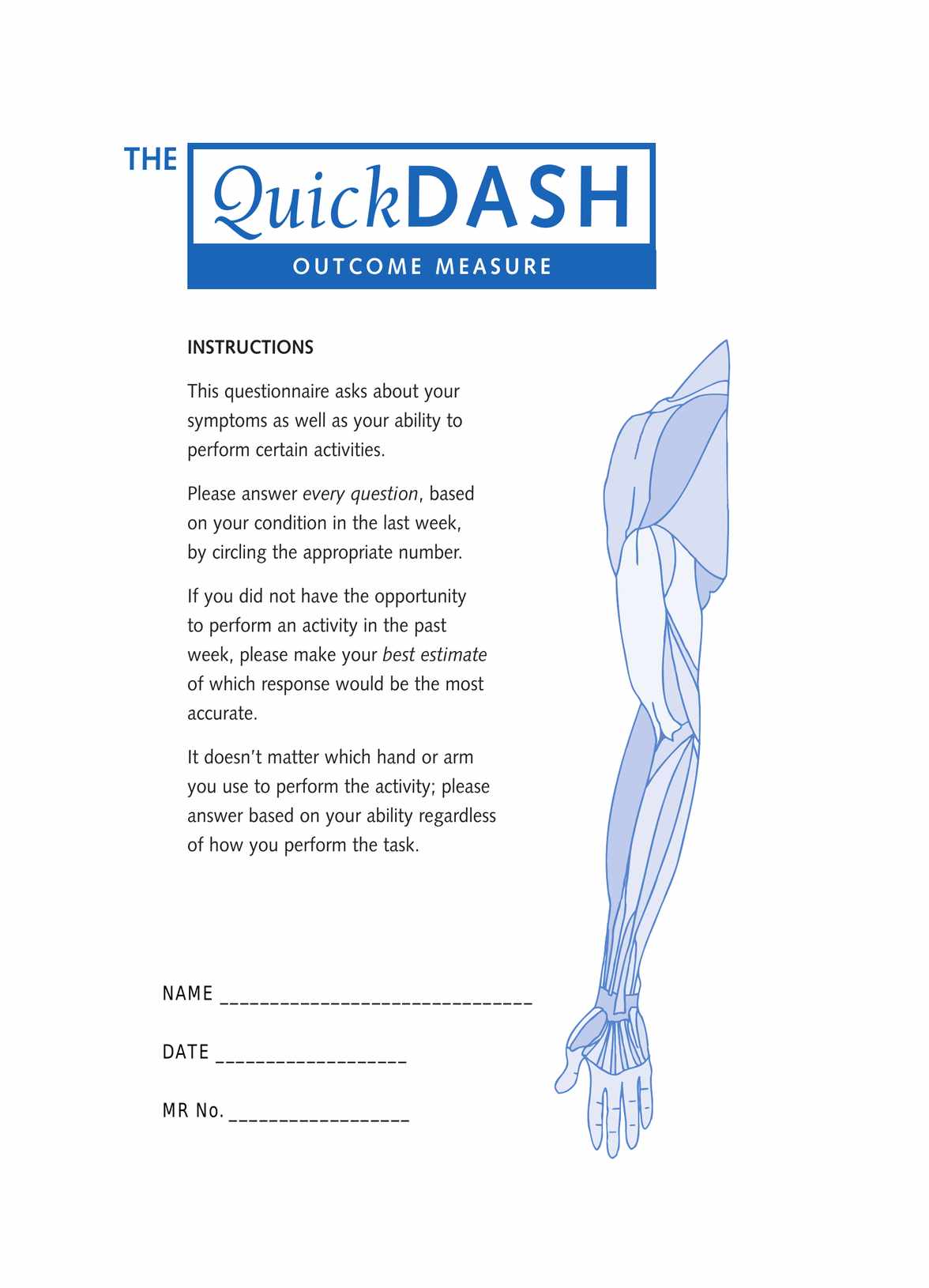The QuickDASH Outcome Measure is easy to administer. You simply need to have the patient answer a series of questions about their current level of disability. Afterwards, you can use the results to diagnose and determine their best treatment plan.

QuickDASH Outcome Measure
The QuickDASH Outcome Measure is an assessment tool used to measure physical disability and impairment due to musculoskeletal pain. Access the free QuickDASH Outcome Measure to get started.
Use Template
QuickDASH Outcome Measure Template
Commonly asked questions
The QuickDASH measures the severity of musculoskeletal disability in a patient. It can also assess overall functional capacity, including their ability to perform activities of daily living, work-related tasks, and leisure activities.
The QuickDASH can be used during the patient’s treatment to assess their progress and determine if they need any additional intervention.
EHR and practice management software
Get started for free
*No credit card required
Free
$0/usd
Unlimited clients
Telehealth
1GB of storage
Client portal text
Automated billing and online payments











